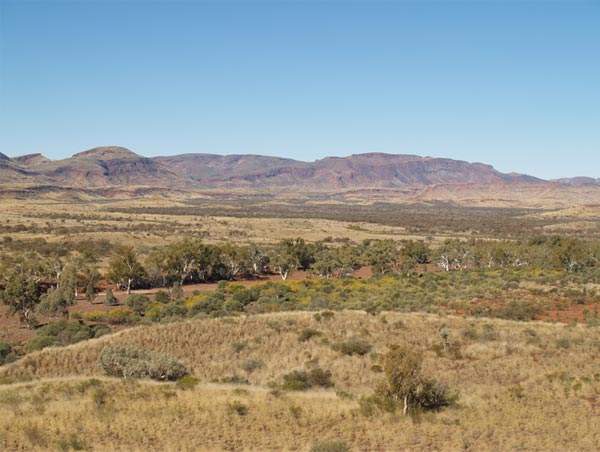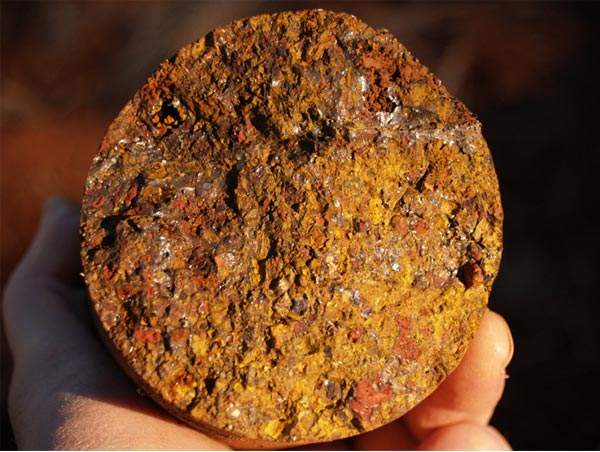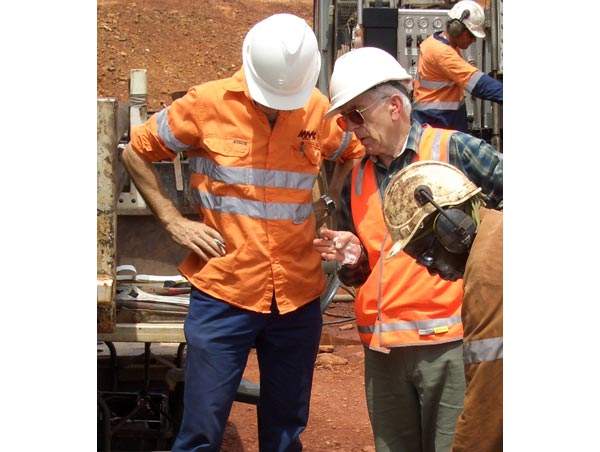Rocklea iron ore project lies 50km north-west of Paraburdoo and 30km west of the town of Tom Price in the Western Australia’s Pilbara region. The location is easily accessible through existing and planned rail infrastructure. The mine is owned and operated by Australia-based Murchison Metals.
In April 2008, Murchison Metals acquired 100% interest in the Rocklea iron ore project from Austral Gold and Joytell under two separate agreements. Dragon Energy’s Rocklea project is located immediately north of Murchison Metals’ Rocklea project.
A scoping study for the Rocklea iron ore project was commenced in the second half of 2009. The study, completed in February 2010, indicated that the project is economically viable.
Mineralisation of the iron ore mine’s surrounding area
The mineralisation at Rocklea iron ore mine includes kaolinite (red tones), partly denaturated CID, ochreous goethite with barely ooidal grains and late-stage vitreous goethite or silica substitute, plus calcrete with colligated Fe smectite.
Geology and indicated and inferred reserves of the Rocklea deposit
The Rocklea channel iron deposit (CID) is formulated across weathered bedrock and metasedimentary rocks.
The Rocklea project includes two tenements covering a total area of more than 400 square kilometres. The tenements are considered to be highly potential for CID style mineralisation.
Satellite imagery and geological maps of the area indicated the presence of up to 40 strike kilometres of a potential paleo-channel on the tenements.
The indicated and inferred resources of the mine (as of February 2010) based on the technical report prepared by SRK Consulting are estimated at 89mt (wet) grading at 59.9% calcined iron (CaFe), 53.2% Fe, 0.03% Phosphorus (P), 8.2% SiO2, 3.5% Al2O3 and 11.2% LOI. The higher grade zone includes 46mt of indicated and inferred resources.
Exploration and drilling carried out at the Rocklea iron ore mine
The CID mineralisation within the Rocklea tenements was identified by the previous operator. The prospective CID mineralisation was also found among the same paleo-channel to the north and east of the Rocklea tenements.
The mineralised part of the channel in the eastern part of the project area was discovered by an initial drilling campaign in late 2008. The programme enabled the operators to estimate the first mineral resource in the mining lease. Additional drilling activities conducted in 2009 by collecting large diameter core for metallurgical test work revised this estimate upwards.
The northern tenement at the mine was earlier explored for iron ore by Jupiter Mining. The southern tenement was unexplored until Murchison took rock chip samples from different areas along the full length of the paleo-channel across the tenement.
HyLogging technology from CSIRO was used for the drilling and sampling programme.
Mining and processing of owner Murchison Metals’ Pilbara-based deposit
The mine will produce lump and fine iron ore at an average grade of 55% Fe. Metallurgical testing conducted on samples from large diameter drill cores indicated that production can be increased using simple scrubbing and lump jigging processes.
A processing plant will be set up to deliver up to 10mtpa of lumps and fines. The capital cost of the project is estimated at $370m, including a contingency fund of $44m. The average mine gate operating costs are estimated at $21/t.
Infrastructure of the Western Australian Rocklea iron ore project
The operator is exploring various transport infrastructure options for the project to secure a viable transportation solution for delivering the iron ore to nearby port for further export to world markets.
The mine can also utilise the services of three existing or projected rail and port infrastructure projects, located within 20km to 100km of the Rocklea site.
Murchison plans to construct a 40km long conveyor for the Rocklea project. Alternative conveyors covering a distance of 20km to 100km were also considered based on access to the infrastructure. The company is also looking out for new regulatory framework for providing third party access to infrastructure in the Pilbara region.






